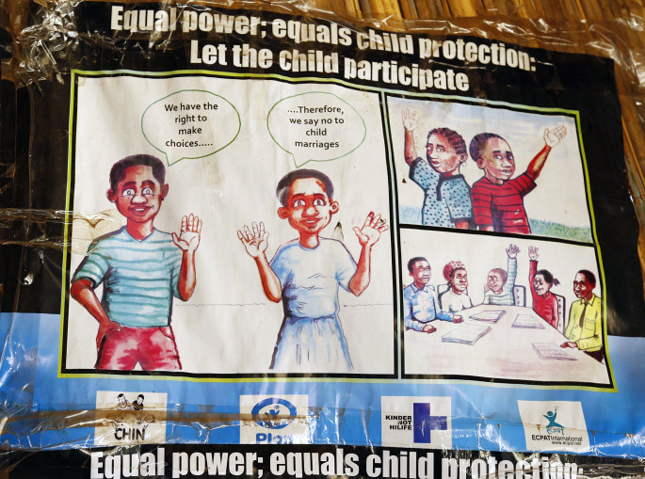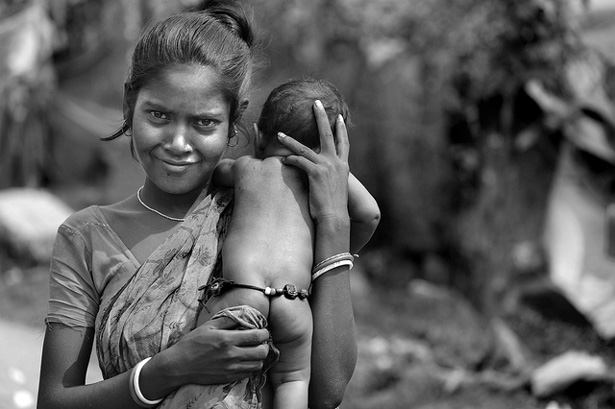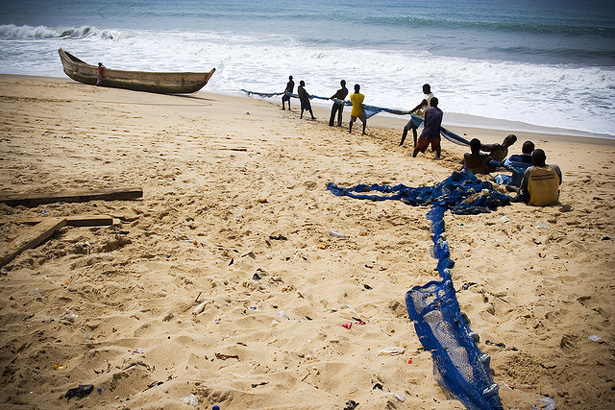-
Underage: Addressing Reproductive Health and HIV Needs in Married Adolescent Girls
›
In July, thousands of people attended the 20th International AIDS Conference and the 2014 Girls Summit to work towards an AIDS-free generation and ending child and forced marriage. But such attention is rare; by and large, these girls are invisible to development efforts. [Video Below]
-
Facing the Challenge of Adolescent Pregnancy: ‘State of the World Population 2013’ Launch
›
Twenty thousand girls under the age of 18 give birth every day, and 90 percent of these births occur within the context of marriage, according to the UN Population Fund’s latest State of the World Population report. This year’s edition, launched at the Wilson Center on October 30, focuses on adolescent pregnancy and finding ways to better protect this vulnerable group of young women.
-
Facing the Future: Empowering Youth to Protect Their Health and Environment in Ghana and the Philippines
›
In the Philippines, there are health and development programs that specifically target children, senior citizens, and adults, said Joan Castro, but adolescents are underserved. Nineteen percent of the population is between the ages of 15 and 19, but “they can’t even go to health centers to get the family planning commodities [they desire],” she said. [Video Below]
-
The Challenges and Benefits of Addressing Young Adolescent Reproductive Health
›There are 1.2 billion adolescents (ages 10 to 19) in the world today, accounting for 17 percent of the global population. They are the largest youth cohort in history, and 90 percent live in the developing world. Within that broad age group, very young adolescents (ages 10 to 14) often fall through the cracks of international development work, especially when it comes to health, and reproductive health in particular.
-
Adenike Esiet: Building Support for Improving Adolescent Sexual and Reproductive Health in Nigeria
›“In Nigeria, young people under the age of 25 are driving the HIV epidemic…and that’s been the opening place for people to begin to say, ‘let’s address the issues of young people’s sexual and reproductive health,’” said Adenike Esiet, executive director of Action Health Incorporated in Lagos, during an interview with ECSP.
On any number of health indicators, girls suffer disproportionately. “For every one boy in the age bracket of 10 to 24 who is HIV positive, there are three girls who are HIV positive,” Esiet said. “Over 60 percent of cases of complications from unsafe abortion reported in Nigerian hospitals are amongst adolescent girls. In fact in literature, 10-15 years ago, this was described as ‘a schoolgirl’s problem’…and it’s still an ongoing problem.” She added: “And for girls too, the issue of sexual violence is huge. It goes largely unreported but it’s occurring at epidemic levels.”
Esiet spoke on an adolescent health panel during the April 25 “Nigeria Beyond the Headlines” event at the Wilson Center. Progress is slow on these issues, in large part because “there’s a whole lot of silence about acknowledging young people’s sexuality,” she said.
Adults “want to believe [adolescents] shouldn’t be sexually active.” But turning a blind eye to adolescent sexuality can mean that efforts “to provide access to education or services is hugely resisted by practitioners who should be doing this.”
Action Health works to fill the gap that emerges. “Our work covers advocacy, community outreach, and service provision for young people,” said Esiet.
“Our primary entry road in to work with young people is creating access to sexuality education and youth friendly services. And in the course of trying to do that, we have to do a whole lot of advocacy with government and also with ministries or education and ministries of health and youth development.”
The group has worked with government officials and agencies to establish a nationwide HIV education curriculum and paired with local healthcare providers to increase access to “youth-friendly” sexual and reproductive health services. Funding shortages and insufficient resources have hampered the curriculum’s success, though, and the pervasive attitude against youth sexuality has limited the reach of services, she said. Ultimately, “there are a whole range of issues that truly need to be addressed” for outreach efforts to be successful.
-
Programming to Address the Health and Livelihood Needs of Adolescent Girls
›
“There are 750 million adolescent girls in the world today, and this is by far one of the world’s most marginalized and vulnerable demographics,” said Denise Dunning, the Public Health Institute’s program director for emergency contraception in Latin America during a February 2 panel at the Wilson Center. Dunning, who also leads the Adolescent Girls’ Advocacy and Leadership Initiative (AGALI), was joined by Margaret Greene, director of Greeneworks, and Jennifer Pope, the deputy director of sexual and reproductive health at Population Services International, to discuss how to better reach underserved adolescent girls in developing countries with health and livelihood programs.
-
Start With A Girl: A New Agenda For Global Health
›November 16, 2009 // By Calyn OstrowskiThe Center for Global Development’s latest report, Start With A Girl: A New Agenda For Global Health, sheds light on the risks of ignoring the health of adolescent girls. Like other reports in the Girls Count series, it links broad social outcomes with adolescent health. “Adolescence is a critical juncture for girls. What happens to a girl’s health during adolescence determines her future–and that of her family, community, and country,” state coauthors Miriam Temin and Ruth Levine.
Between childhood and pregnancy, adolescent girls are largely ignored by the public health sector. At the same time, programs and policies aimed at youth do not necessarily meet the specific needs of girls. Understanding the social forces that shape girls’ lives is imperative to improving their health.
Like recent books by Michelle Goldberg and Nicholas Kristof, the report argues for increased investment in girls’ education to break down the social and economic barriers that prevent adolescent girls from reaching their full potential. Improving adolescent girls’ health will require addressing gender inequality, discrimination, poverty, and gender-based violence.
“For many girls in developing countries, well-being is compromised by poor education, violence, and abuse,” say Temin and Levin. “Girls must overcome a panoply of barriers, from restrictions of their movement to taboos about discussion of sexuality to lack of autonomy.” The report points to innovative government and NGO programs that have successfully changed negative social norms, such as female genital cutting and child marriage. However, the authors urge researchers to examine the cost-effectiveness and scalability of these programs.
In the last five years, the international community has become increasingly aware of the importance of youth to social and economic development. Some new programs are focused on investing in adolescent girls, such as the World Bank’s Adolescent Girls Initiative and the White House Council on Women and Girls, but significant additional investment and support is needed.
“Big changes for girls’ health require big actions by national governments supported by bilateral and multilateral donor partners, international NGOs…civil society and committed leaders in the private sector,” maintain Temin and Levin. They offer eight recommendations:
1. Implement a comprehensive health agenda for adolescent girls in at least three countries by working with countries that demonstrate national leadership on adolescent girls.
2. Eliminate marriage for girls younger than 18.
3. Place adolescent girls at the center of international and national action and investment on maternal health.
4. Focus HIV prevention on adolescent girls.
5. Make health-systems strengthening and monitoring work for girls.
6. Make secondary school completion a priority for adolescent girls.
7. Create an innovation fund for girls’ health.
8. Increase donor support for adolescent girls’ health.
“We estimate that a complete set of interventions, including health services and community and school-based efforts, would cost about $1 per day,” say the authors of Start With a Girl. There is no doubt in my mind that this small investment would indeed have a high return for the entire global community.
Showing posts from category adolescent health.







